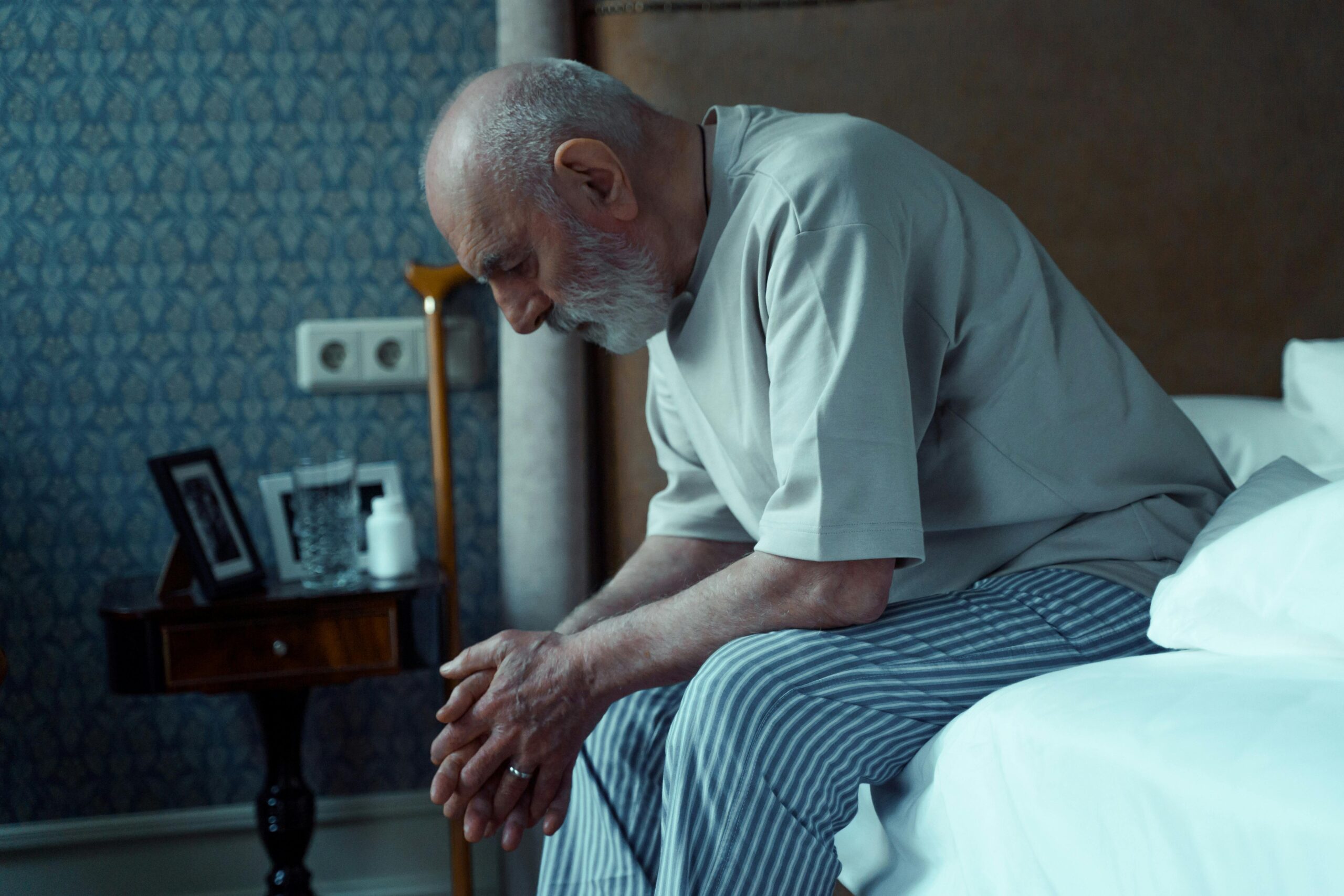There Are Several Physical Changes You Will Be Able To Feel During The ‘LAST HOURS AND DAYS OF YOUR LIFE’

Have you ever paused to wonder what the final moments of life might feel like? It’s a question that, while deeply personal, touches something universal within all of us. Death is the one experience every human being shares, yet it’s cloaked in mystery and often met with fear.
Understanding what happens during the last hours and days of life can be both grounding and comforting—not just for those nearing the end, but also for their loved ones. These moments, though challenging, hold a profound beauty when approached with awareness. The body, in its wisdom, begins to prepare for its transition, sending subtle signals that it’s letting go.
This exploration sheds light on the physical changes that occur during the final stages of life, offering clarity and compassion to help ease this natural and sacred process. Whether you’re seeking understanding for yourself or someone you care about, these insights provide a meaningful perspective on the journey toward peace.
Understanding the Final Chapter of Life
The journey toward the end of life is a profound experience, marked by a series of changes that reflect the body’s gradual release. For some, it may feel like an unwelcome visitor, while for others, it carries a quiet acceptance. Recognizing these changes can ease uncertainty and provide comfort, turning fear into understanding.
In the days leading up to death, the body begins to slow its functions, as though signaling the end of a long race. Energy wanes, and rest becomes a priority. This is not simply fatigue but the body’s way of conserving its remaining strength. It’s natural for individuals to sleep more often and interact less with their surroundings. These shifts are not signs of suffering but rather a part of the body’s natural rhythm as it prepares for the transition.
Loved ones often notice a diminished interest in food or drink. This change can be unsettling to witness, but it’s important to remember that the body no longer requires the same nourishment. Offering water for the lips or simply being present becomes a gesture of care. These changes remind us that the dying process is not a failure of the body but a testament to its profound intelligence in knowing when to let go.
Physical Changes in the Days Before Death
As the final days approach, the body begins to show distinct physical signs of its transition. These changes, while varied, are a natural part of the journey and often reflect the body’s slowing systems. Understanding them can help create a sense of acceptance and reduce fear for both the individual and their loved ones.
One of the most noticeable changes is in breathing patterns. The steady rhythm of inhaling and exhaling may give way to irregularities, such as slower breaths followed by rapid ones, or pauses that can feel unsettling to witness. This phenomenon, known as Cheyne-Stokes breathing, is common and signals the body adjusting to lower oxygen levels. Additionally, fluid may build up in the lungs, producing a rattling sound. Though this can seem alarming, it is typically not uncomfortable for the individual.
 Image source: Pexels
Image source: Pexels
Circulation also begins to slow, which impacts the body’s temperature regulation. Hands, feet, and other extremities often become cool to the touch, and the skin may take on a pale or mottled appearance. This is the body redirecting blood flow to essential organs, prioritizing their function in these final stages. Blankets or warm compresses can provide comfort without forcing the body to fight against its natural processes.
A loss of appetite is also common. As the digestive system winds down, food and drink become less necessary and may even cause discomfort. Caregivers often feel compelled to encourage eating, but it’s essential to respect the body’s cues. Small, gentle gestures—like wetting the lips or offering ice chips—can be a meaningful way to show care without imposing unnecessary strain.
The Last 24 Hours
The final 24 hours of life are often marked by a profound stillness as the body enters its final phase of transition. During this time, physical changes become more pronounced, reflecting the body’s gradual surrender. While this period can be emotionally challenging for loved ones, it is also an opportunity to provide peace and comfort.
Breathing patterns tend to grow increasingly irregular. Long pauses may separate shallow breaths, or gasping may occur as the body adapts to diminishing oxygen levels. This change can be unsettling to witness, but it is a natural part of the process and rarely causes distress for the individual. In some cases, individuals may exhibit brief moments of rapid breathing before returning to a calmer rhythm.
Another noticeable change is the coolness of the skin, particularly in the hands, feet, and extremities. The body’s blood circulation slows significantly, focusing its energy on vital organs. Skin may take on a pale, bluish, or mottled appearance, particularly in those with lighter skin tones, while for others, this change may be seen around the lips or fingernails. These signs indicate the body’s final preparations and are a natural part of the process.
During these last hours, some people experience a phenomenon known as “the rally,” a sudden burst of energy or lucidity. They may open their eyes, hold a conversation, or smile at loved ones. This moment can feel like a gift, allowing final words or connections to be shared. However, it is typically brief and signals the approaching end.
Loved ones may also observe a deep calm or stillness in the individual. Many people spend these final hours sleeping or in a semi-conscious state, their awareness focused inward. Though verbal communication may no longer be possible, hearing is believed to remain intact. Speaking gently, sharing affirmations of love, or simply being present can create a comforting atmosphere during this tender time.
 Image source: Pexels
Image source: Pexels
What Happens in the Final Hours
The final hours of life are often a time of profound peace, where the body quietly signals that it’s ready to let go. While this stage can be deeply emotional for loved ones, it’s also a moment to reflect on the beauty of a life lived and to provide comfort in the transition.
Breathing patterns may change significantly, with long pauses between breaths or occasional gasps. This irregular rhythm, often accompanied by a soft “rattling” sound, is the body’s natural way of winding down. Though this sound may feel unsettling, it’s not typically a source of discomfort for the person experiencing it. Their focus is no longer on the physical world, but on an inner journey toward peace.
The body also shows signs of slowing down. Hands and feet may become cool to the touch, and the skin might take on a pale or bluish hue. A weak pulse and complete muscle relaxation often follow, giving the face and body a calm, serene appearance. Even the eyes may seem to reflect this peace, with a soft, glassy look that suggests the person is gently drifting away.
Consciousness during these final hours is minimal, but hearing often remains. This is why gentle words, quiet reassurances, or even a loving silence can mean so much. For some, this stage may bring visions of loved ones or spiritual figures, offering a comforting bridge between this world and the next. These experiences, though deeply personal, often bring a sense of calm to both the individual and those around them.
What matters most during this time is simply being present. Hold their hand, speak softly, or just sit beside them, letting your love fill the space. These moments are sacred, a quiet goodbye filled with the warmth of connection and the reassurance that they are not alone.
Finding Peace in the Last Chapter
The final stages of life, though challenging, offer a profound opportunity to provide love, comfort, and dignity to those we cherish. By understanding the physical and emotional changes that occur, caregivers can approach this journey with empathy and preparedness, ensuring that their loved ones are supported in every way possible.
Death is a natural part of life, a transition that requires patience, tenderness, and understanding. While the physical signs of decline might seem daunting, they also serve as reminders of the shared human experience, offering moments for reflection, connection, and closure. For caregivers, the ability to remain present, to listen, and to offer simple acts of kindness can transform the process into one of peace and meaning.
As we navigate these delicate moments, let us remember the words of poet Yannis Ritsos: “Now, I have no choice but to see with your eyes, so I am not alone, so you are not alone.”
Through shared compassion and unwavering presence, we ensure that no one faces their final journey alone.
Featured image from: Shutterstock
Loading...






